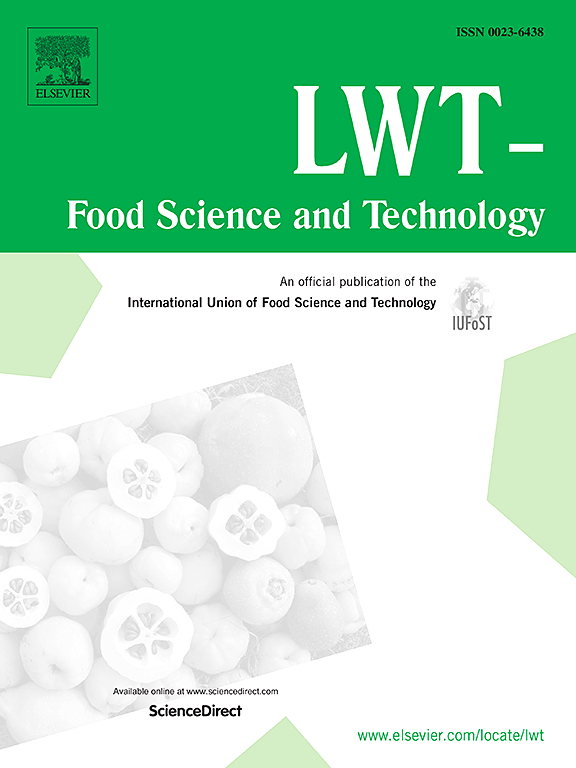Modeling the rehydration kinetics of dried rice noodles based on Peleg and Arrhenius equations and qualities maintenance
IF 6
1区 农林科学
Q1 FOOD SCIENCE & TECHNOLOGY
引用次数: 0
Abstract
Rehydration of dried rice noodles (DRN) is a time-consuming process and has a significant impact on the quality of the rice noodles. In this study, the relationship between rehydration conditions and moisture content was explored through the rehydration kinetics analysis, and the effect of rehydration temperature on the quality of DRN was investigated, and preservation methods were optimized for preservative to improve storage quality on rehydrated rice noodles (RRN). The results demonstrated that the rehydration process of DRN could be described using mathematical equation, and the fitted and predictable equations were obtained. RRN remained better in terms of cooking quality, texture, and the rate of rupture after optimizing rehydration conditions. When the concentrations of lactic acid, ε-polylysine, and sodium dehydroacetate were 25 ppm, 63 ppm, and 200 ppm, respectively, the initial aerobic plate count of RRN was the lowest, and the shelf-life was extended to 3 days. Though the E-nose and Loadings analysis, nitrogen oxides, and aromatic hydrocarbons, played an important role in differentiating the odor of RRN. Understanding the rehydration process helped to maintain the quality of RRN, and the optimization of the preservative is expected to be applied to increase the economic benefits in rice products-related enterprises.
求助全文
约1分钟内获得全文
求助全文
来源期刊

LWT - Food Science and Technology
工程技术-食品科技
CiteScore
11.80
自引率
6.70%
发文量
1724
审稿时长
65 days
期刊介绍:
LWT - Food Science and Technology is an international journal that publishes innovative papers in the fields of food chemistry, biochemistry, microbiology, technology and nutrition. The work described should be innovative either in the approach or in the methods used. The significance of the results either for the science community or for the food industry must also be specified. Contributions written in English are welcomed in the form of review articles, short reviews, research papers, and research notes. Papers featuring animal trials and cell cultures are outside the scope of the journal and will not be considered for publication.
 求助内容:
求助内容: 应助结果提醒方式:
应助结果提醒方式:


